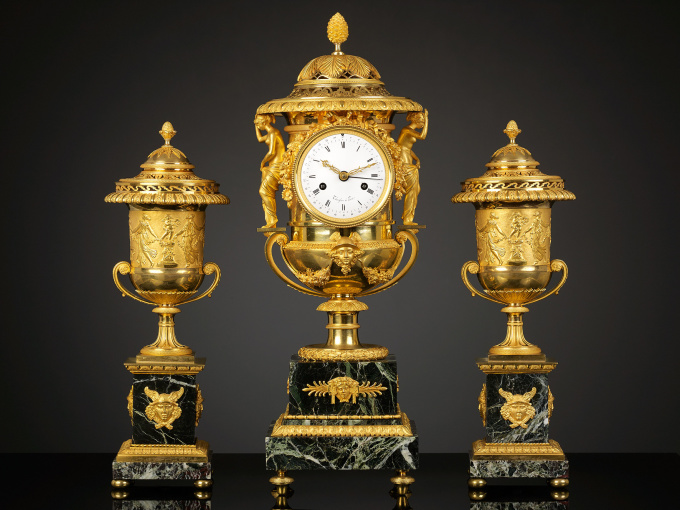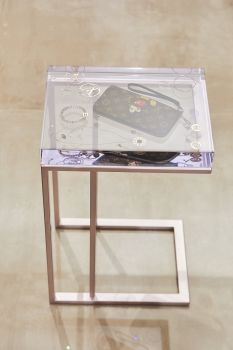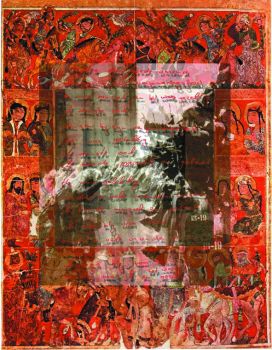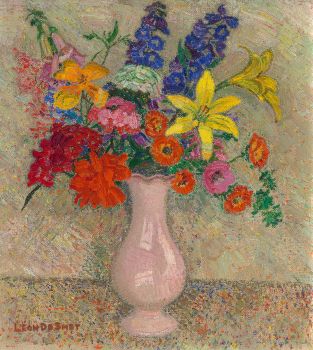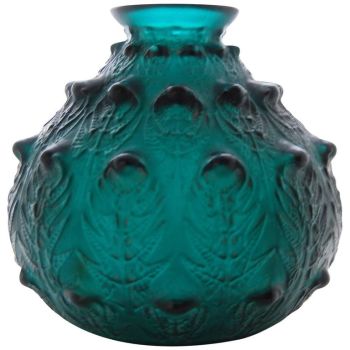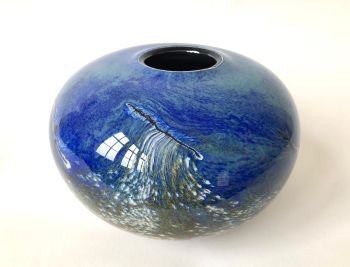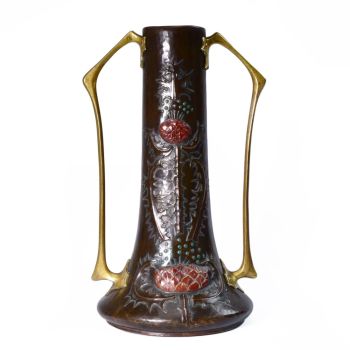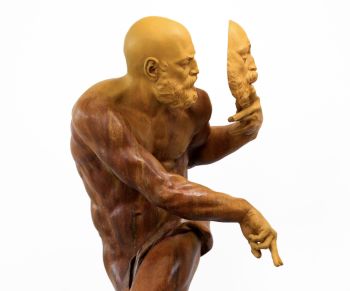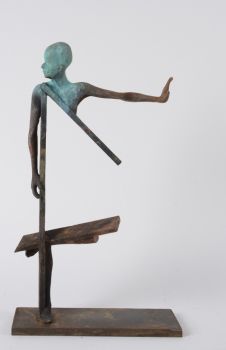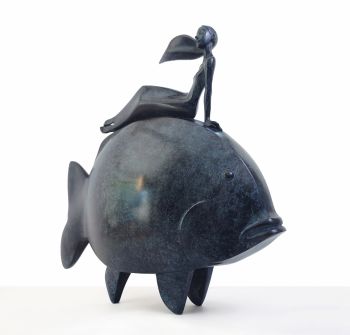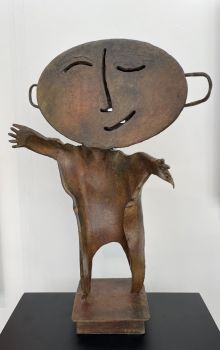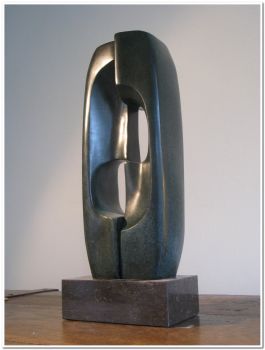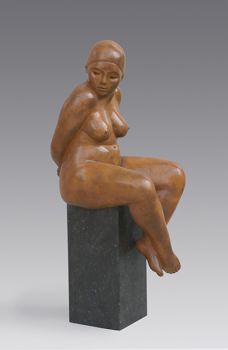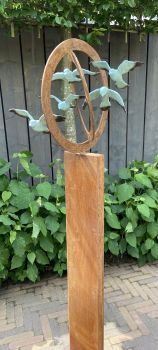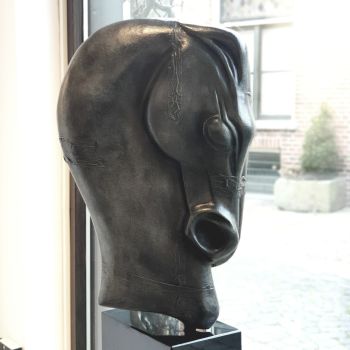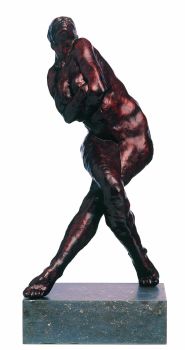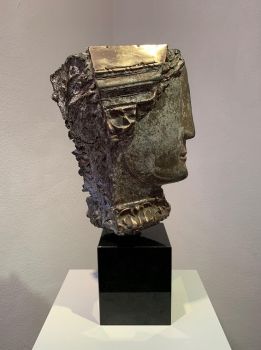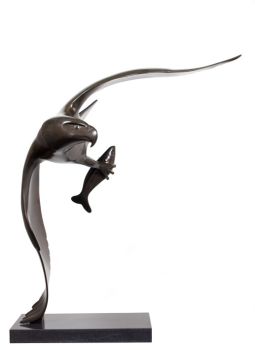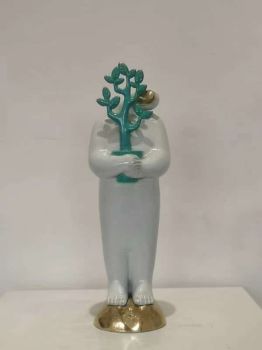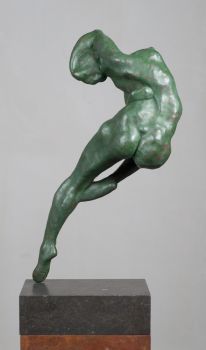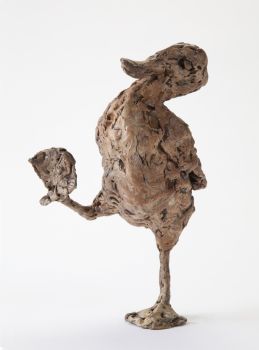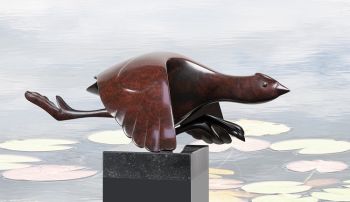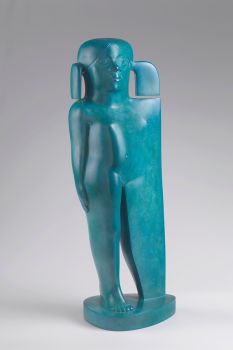Uma Suíte Império de um Relógio de Mantel em forma de Urna e Dois Vasos 1810
Pierre-Philippe Thomire
MármorePedraBronzeMetal
60 ⨯ 21 ⨯ 21 cm
Atualmente indisponível via Gallerease
- Sobre arteAn exceptionally large and beautiful set of two ornamental vases and a mantel clock, after a model by Thomire, and with a Clockwork by Thonissen.
Clockwork
8-day going train, striking train and central date indication. The white enameled dial shows Roman numerals for the hours and stripes for the minutes. The outer ring indicates the date (1-30) in Arabic numerals.
Signed on the dial: Thonissen à Paris
Thonissen worked from the Rue Mandar from 1806 to 1840.
The mantel clock is shaped like a “de Medici” vase and is flanked by two female figurines “à l ‘antique” who support the lid with their right hand. The, partly openwork, lid is decorated with stylized palmettes and a pine-cone finial. The outside of the dial is decorated with a beaded edge and a garland pending from the top. Underneath the dial the vase has a male portrait with a winged helmet, presumably Mercury or Hermes, flanked by floral garlands. The clock is resting on a double marble plinth with four bun-shaped legs. The pedestal is decorated with portraits flanked by stylized palmettes and an architrave with leaf motifs.
The ornamental vases have the same shape as the mantel clock, but are much simpler in their ornamentation. The body is decorated with a relief of dancing priestesses and putti. A comparable set can be found in the Duesberg Museum in Mons, Belgium.
Pierre-Philippe Thomire (1751-1843) was one of the most famous bronze casters and ciseleurs during the French Empire era. Although trained as a sculptor, Thomire chose to follow in his father’s footsteps, and take up the more lucrative profession of ‘fondeur’. He became the leading bronze artist of the late 18th and early 19th century. Thomire was trained by Gouthière and afterwards founded his own company that manufactured ornamental bronzes for furniture. Later, Thomire became assistant to Duplessis, the director of the Manufacture de Sèvres. After the death of Duplessis in 1783, Thomire turned once again to bronze casting and manufactured bronze fittings for porcelain artefacts. In 1809 Thomire was awarded the title “Ciseleur de l’Empereur”. - Sobre artistaPierre-Philippe Thomire nasceu em 1751 e se tornou um dos mais famosos fundidores de bronze e ciseleuros durante a era do Império Francês. Embora tivesse recebido treinamento como escultor, Thomire escolheu seguir os passos de seu pai e assumir uma profissão mais lucrativa de ‘Fondeur’, ou fundidor. Ele cresceu e se tornou o principal artista de bronze do final do século 18 e início do século 19. Thomire foi treinado por Gouthière, mas logo estabeleceu sua própria oficina para fabricar bronzes ornamentais para móveis. Mais tarde, Thomire tornou-se assistente de Duplessis, o diretor da Manufacture de Sèvres. Depois que Duplessis faleceu em 1783, Thomire se envolveu com fundições de bronze mais uma vez, agora fabricando acessórios de bronze para artefatos de porcelana. Em 1809, ele foi premiado com o título de ‘Ciseleur de l’Empereur’. Sabemos que sua assinatura é: THONISSEN A PARIS. Ele faleceu em 1843.
Artwork details
Categoria
Assuntos]
Estilo
Material e Técnica
Cor
Related artworks
Artista Desconhecido
Conjunto de oito desenhos a guache1799 - 1801
Preço em pedidoRobert Schreuder Antiquair
Artista Desconhecido
Set Franse Empire Pendules / Empire Lectura penduleearly 19th
Preço em pedidoKuipers Kunst & Antiek
Artista Desconhecido
Pulseira de diamante do século 18 com entalhes de 2.000 anos1790
€ 23.000Adin Fine Antique Jewellery
 Com curadoria de
Com curadoria deDanny Bree
1 - 4 / 15Artista Desconhecido
The Stamford Raffles Secretaires.1800 - 1813
Preço em pedidoZebregs & Röell - Fine Art - Antiques
Artista Desconhecido
UM MODELO JAPONÊS DE UM NORIMONO, UM PALANQUIM1650 - 1700
Preço em pedidoZebregs & Röell - Fine Art - Antiques
1 - 4 / 24Gabriel Argy-Rousseau
Gabriël Argy-Rousseau – Crabes et Algues vase – 19201920 - 1929
Preço em pedidoAntiques Emporium
René Lalique
Um vaso "Fougeres" verde profundo muito raro projetado por R. Lalique1912
€ 8.950Lennart Booij Fine Art and Rare Items
 Com curadoria de
Com curadoria deSilla Scheepens
1 - 4 / 24- 1 - 4 / 24

